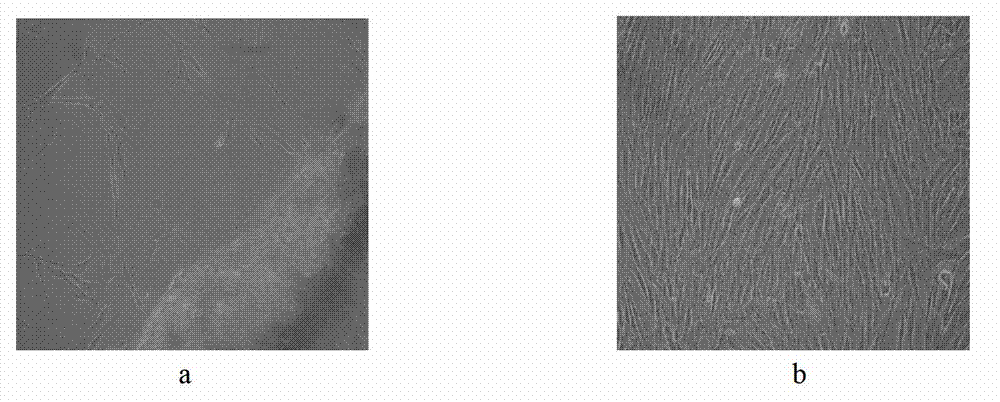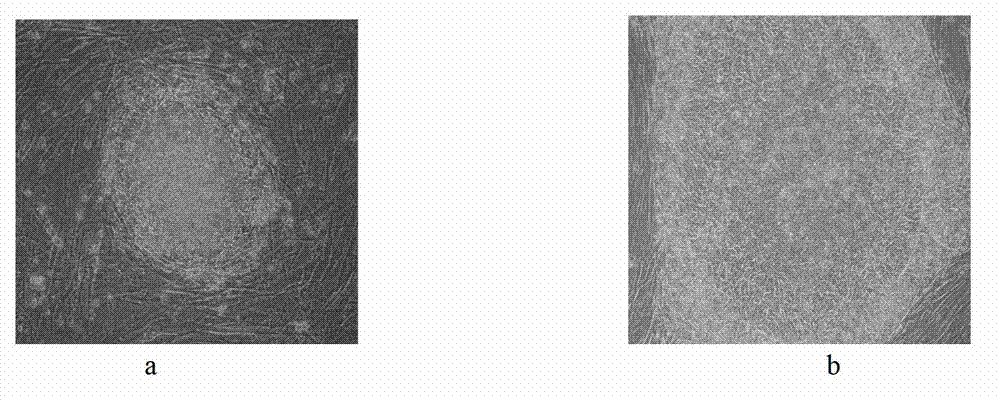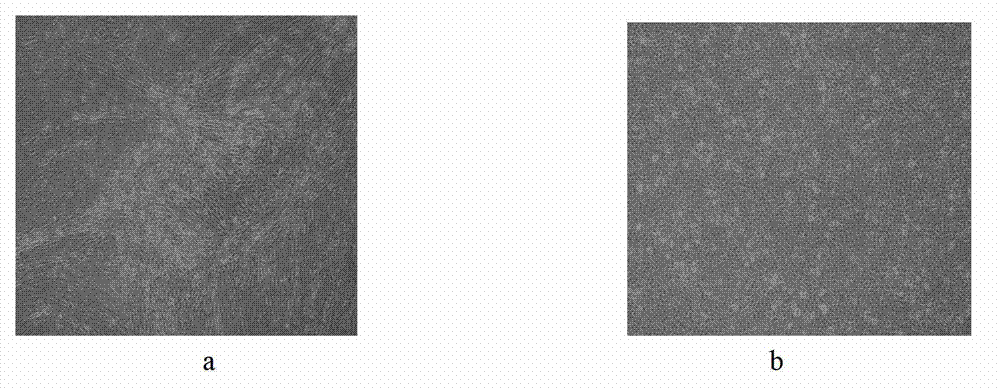Inducing method for directionally differentiating human embryonic stem cells to corneal endothelial cells
A technology of human embryonic stem cells and corneal endothelium, applied in the field of tissue engineering and ophthalmology, can solve the problems of inability to obtain human neural crest stem cells and hinder the induction and differentiation of human corneal endothelial cells
- Summary
- Abstract
- Description
- Claims
- Application Information
AI Technical Summary
Problems solved by technology
Method used
Image
Examples
Embodiment
[0028] 1. Primary culture of human corneal stromal fibroblasts: obtain fresh donor corneal rings that are not clinically suitable for corneal transplantation, soak them in balanced salt solution containing 100U / ml penicillin-100U / ml streptomycin repeatedly Rinse 3 times, 10 minutes each time, place under an inverted microscope, scrape off the corneal epithelium with an epidermic knife, tear off the elastic layer and endothelium with microscopic tweezers, and rinse the remaining corneal stroma repeatedly with balanced salt solution to remove residual corneal epithelium and endothelial fragments , cut it into 1mm×1mm tissue pieces with micro scissors, and evenly adhere to the culture dish. After the wall is firmly attached, add DMEM / F12 medium containing 10% fetal bovine serum, and place at 37°C, 5%CO 2 Incubation in the incubator. The medium was changed every 3 days, and some stromal cells were found to swim out after 7 days of culture (such as figure 1 As shown in a), after a...
PUM
 Login to View More
Login to View More Abstract
Description
Claims
Application Information
 Login to View More
Login to View More - R&D
- Intellectual Property
- Life Sciences
- Materials
- Tech Scout
- Unparalleled Data Quality
- Higher Quality Content
- 60% Fewer Hallucinations
Browse by: Latest US Patents, China's latest patents, Technical Efficacy Thesaurus, Application Domain, Technology Topic, Popular Technical Reports.
© 2025 PatSnap. All rights reserved.Legal|Privacy policy|Modern Slavery Act Transparency Statement|Sitemap|About US| Contact US: help@patsnap.com



